-Cuéntanos quien eres.
X- Mi nombre es Juana Bernarda Hernández Gómez, pero todos me dicen Xunka, que es mi nombre en tzotzil (Juana). Yo trabajo aquí en mi casa con un grupo de artesanas, tenemos una cooperativa que se llama Mujeres Sembrando la Vida, estoy como asesora y trabajamos en desarrollo de productos.
-¿Cómo comenzaste tu vida artesanal?
X- Yo comencé con mi mamá, desde niña me enseñó a bordar y a tejer y con ello a hacer nuestra propia ropa. Siempre me ha gustado bordar, bordo mi blusa y mi chal, tejer hago muy poco pues no me gusta mucho, mis hermanas tejen y mi mamá también, yo creo que el telar de cintura es muy cansado y complicado, te duelen los pies y la espalda, pero depende de que te guste y que sea lo que te dé la motivación.
-¿Hay prendas de Zinacantán que cuenten historias?
X- Sí, hemos tejido blusas para las fiestas de la comunidad y la falda tejida lisa, mi mamá teje huipil emplumado, que es el traje típico de las novias de Zinacantán, les ponen plumas de gallina blanca entretejidas que significa esperanza, dignidad y pureza.
-Así como las prendas cuentan historias, ¿Los colores de los trajes de diario tienen algún significado?
X- Son más por moda, los jóvenes que van a la escuela, en especial los de preparatoria, quieren innovar e invierten elementos y colores.
-¿Crees que el trato entre productores – artesanos ha ido mejorando los últimos años? ¿Por qué?
X- Yo creo que sí, ahorita hay muchos diseñadores que buscan mucha producción en Zinacantán y no sólo aquí en la comunidad, también en muchas otras. Ellos actualizan la moda y buscan artesanos.
También hay gente que sigue sin valorar nuestro trabajo y muchas veces nos bajan el precio. Esta zona es turística y hay guías que vienen de agencias, ellos lo que hacen es crear contratos con artesanas; traen turistas y por ventas de producto que hagamos debemos pagar un porcentaje a ellos, entonces los precios iniciales deben subir, esto hace que el comercio se desestabilice. Por ejemplo, hay artesanas que venden a otras y si en un principio una servilleta cuesta $30 y nosotras le subimos $30 más y por los guías de turismo se les sube otros $30 el precio se eleva mucho para los turistas, esto genera un precio injusto tanto para artesanos como para clientes.
– A pesar de la desvalorización de algunos, ¿De qué manera el trabajar con productores te ha beneficiado a ti y a tu familia / comunidad?
X- Nos ha beneficiado porque nos apoyamos mucho, nosotras trabajamos, hacemos artesanía y vendemos directo a un cliente.
– Sobre la cooperativa que antes mencionabas, Mujeres Sembrando la Vida, cuéntanos un poco de ella, ¿Cómo comenzó? y ¿Por qué decidieron hacerla?
X- Ellas empezaron a trabajar en 1999, se reunieron con un programa de ahorro y crédito y de ahí comenzaron a trabajar con proyectos productivos. Yo me integré en el 2001 y me encargué de la organización y trabajé para poder legalizar esta iniciativa.
Estar en la cooperativa es muy bueno, te hace trabajar entre mujeres y te hace confiar en nosotras mismas. A los clientes les llama la atención porque ya no es una sola artesana la que trabaja o una sola familia, sino que ya es todo un equipo.
Ahorita en la cooperativa estamos sacando unos huipiles y de las 50 mujeres que trabajamos cada una sabe hacer distintas cosas, así nos repartimos el trabajo. Pero por ejemplo, hay 10 que saben brocar y las otras 40 no, entonces nos enseñamos y hacemos talleres para esto, hay veces que se quedan en la casa y se hace intercambio de conocimiento.
Nosotras hacemos propios diseños, los dibujamos y muchas veces también se imaginan y sobre eso se va haciendo el producto. Falta un poco de calidad pero estamos trabajando en ella, también hacemos talleres para esto o a veces vamos a otros, pero por lo general nos checamos entre nosotras y nos motivamos unas a otras para crecer.
Individual no me gusta mucho trabajar, como equipo creces más. En el 2011 dejé de trabajar un poco en Mujeres Sembrando la Vida y trabajé en oficina, yo buscaba mi apoyo personal pero reaccioné en 2013 y me preocupe por mi cooperativa y en lo que las demás artesanas esperarían de mi.
-¿Sólo son mujeres de Zinacantán trabajando en MSV?
X- Trabajo con algunos grupos de Chamula pero no están tan integrados en la cooperativa, somos 7 grupos de Zinacantán los que estamos involucrados en ésta.
– ¿Qué es lo que más disfrutas a la hora de la convivencia con estas otras mujeres?
X- Estar en comunicación , platicar con ellas, ves como participan y como trabajan, estar en contacto con ellas es bueno porque siempre expresan lo que sienten en lo que hacen.
– ¿Cómo ves el cambio de lo artesanal a máquina?
X- Pues ahorita aunque estén las máquinas todo lo hacemos a mano, siempre las usamos y es importante no perderlo, la mayoría del producto que hacemos en la cooperativa es hecho en telar de cintura y bordado a mano, la máquina es usada únicamente para confeccionar.
– ¿Cómo te ves en un par de años?
X- Yo pienso que crecerá más la cooperativa. Ahorita con mi hermana Yolanda hemos iniciado un proyecto y queremos que en un futuro las mujeres tengan un trabajo digno; que puedan tener un salario mínimo y que mensualmente ganen por su producto. Estamos en búsqueda de nuevos clientes que sean seguros para poder seguir diseñando sin perder lo artesanal.
Si me veo haciendo lo mismo, transmitiendo la tradición por generaciones.
Es importante salir y ver nuevas posibilidades, participar en otros talleres con otros grupos y en bazares. Es importante prepararnos como mujeres, salir, participar y hablar.
https://www.facebook.com/msvchiapas
-Tell us who are you
X- My name is Juana Bernarda Hernández Gómez, but everyone calls me Xunka, which is my name in tzotzil (Juana). I work here, in my house with a group of artisans, we have a collective named Mujeres Sembrando la Vida, I’m the main advisor and we work in product development.
-How did your life as an artisan started?
X- It started with my mom, since I was a kid she taught me embroidery and knitting, and also how to make our own clothes. I have always loved embroidering, I did my blouse and my shawl, I don’t weave often because I don’t like it very much, my sisters weave and my mother does also, I think the backstrap loom is very exhausting and complicated, your feet and you back hurt, but it all depends on what you like and what gives you motivation.
-Are there clothes from Zinacantán that tell stories?
X- Yes, we had weave blouses for the community parties, and flat woven skirts. My mom weaves the feathered huipil, which is the typical suit for brides of Zinacantán, they wove white chicken feathers into it, means hope, dignity and purity.
-As the clothes tell stories, the colors of your daily costumes have any meaning?
X- The colors are merely fashion, youngsters who go to school, especially high school, want to innovate and create elements and colors.
-Do you think the deal between producers and craftsmen has been improving over the years? Why?
X- Yes, I think so, nowadays there are many designes searching for production in Zinacantán and not only here, in many other communities too. They innovate fashion and search for artisans.
There’s also people who still won’t value our work and sometimes they ask us to lower the price. This is a touristic area and there are guides who come from agencies, what they do is create contracts with artisans; they bring tourists and for each sale we have to pay them a percentage, so the initial prices rise, which makes a destabilized trade. For example, there are artisans who sell to each other, and if at first a napkin costs $30 mxn and we rise the price another $30 mxn, to get our cut, plus another $30 mxn for the guides’ cut, the price gets too high for tourists, this creates an unfair price both for craftsmen and customers.
– Despite the devaluation of some products, How has working with producers has benefited you and your family / community?
X- We relay a lot in each other, we work, we make crafts and sell direct to a customer. That has been a huge benefit.
– About the collective that you mentioned, Mujeres Sembrando la Vida, tell us a little about it, How it started? and Why did you decide to do it?
X- They began working since 1999, they partnered with a savings and a credit program, and that’s how they started working in productive projects. I joined in 2001 and took charge of the logistics and worked to legalize this initiative.
Being part of the collective is really great, it makes you work with other women and makes you feel confident. It catches the costumer’s attention because is not only one artisan working or a family, is a hole team.
Right now we are making some huipiles with the collective, we are 50 women and everyone knows how to do different things, so we split the work. For example, there are 10 women who know how to make Brocades and the other 40 don’t, we teach each other and do workshops, we share knowledge.
We do our own designs, draw and often we just imagine them and make the product with the idea on our mind. There’s a little bit of quality missing, but we’re working on it, we also do workshops to solve this and sometimes we go to others, but we usually solve it between us and we motivate each other to grow.
I don’t t like to work alone, I think one grows more in a team. In 2011 I stopped working a bit on Mujeres Sembrando la Vida and I started to work in an office, I was looking for my personal support, but I woke up in 2013 and returned to my collective, because I worried about them and what other artisans expected of me.
– Are there only women of Zinacantán working on MSV?
X- I work with some groups from Chamula, but they’re not integrated into the collective, we are 7 groups of Zinacantán involved in MSV.
-What do you enjoy most when working with other women?
X- Being in constant communication, talk with them, see how they participate and work. Being in contact with them is good because they always express their feelings.
-How do you feel about the change of handcrafted things into machine done ones?
X-We still do everything by hand, we practice this all the time and it is important not to lose it, most of the products we make in the collective are made on the backstrap loom and embroidered by hand, the machine is used only to join the pieces.
-How do you see yourself in a pair of years?
X- I think the collective will grow. I started a project with my sister Yolanda, we want women to have a future and a decent job that allows them to have a a minimum monthly wage and make money selling their product. We are looking for new clients to continue designing without losing craftsmanship.
I see myself doing the same, transmitting the tradition for generations to come.
It is important to get out and see new possibilities, participate in other workshops with other groups and bazaars. It is important to prepare us as women, get out, get involved and talk.
https://www.facebook.com/msvchiapas
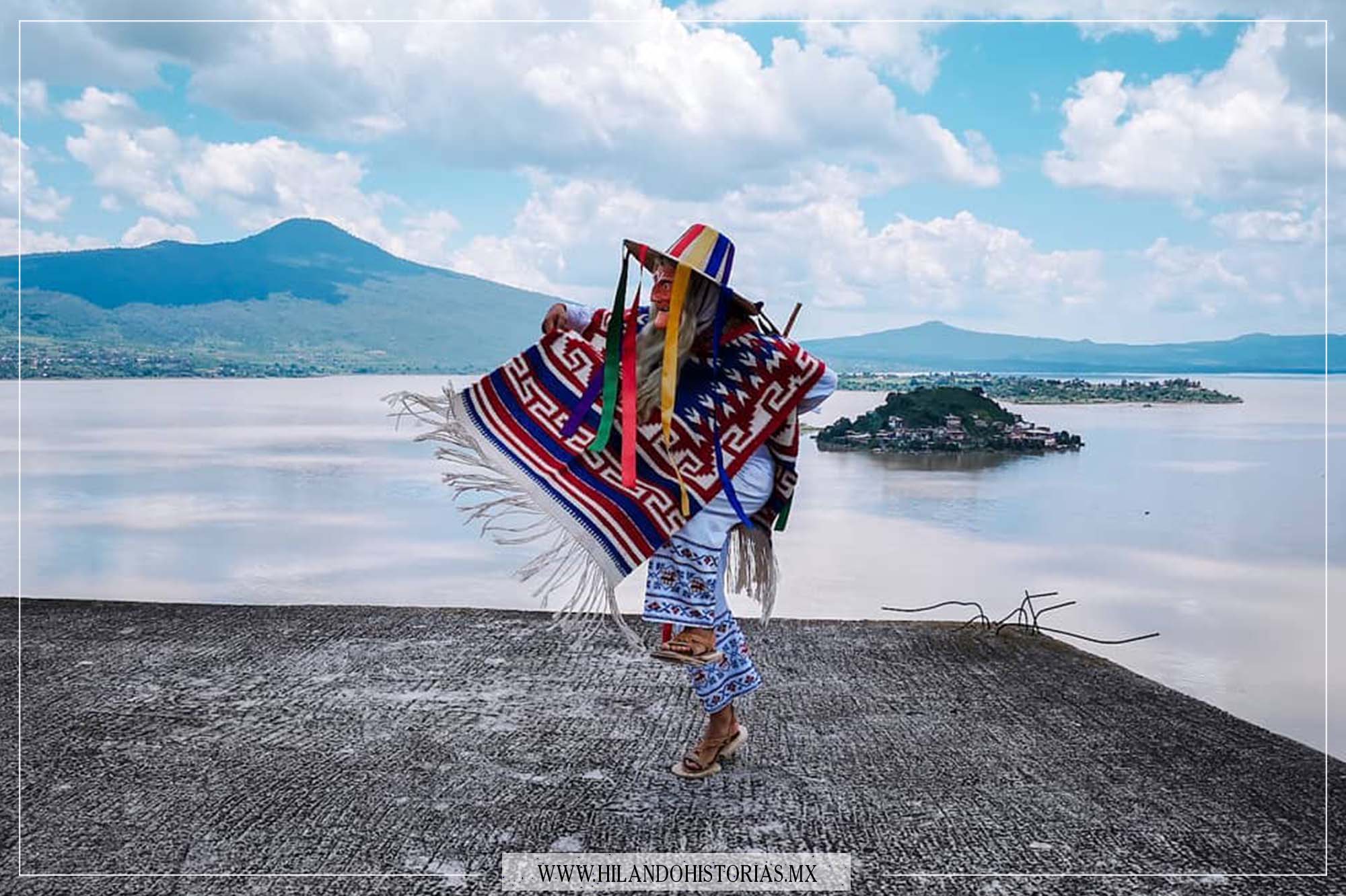
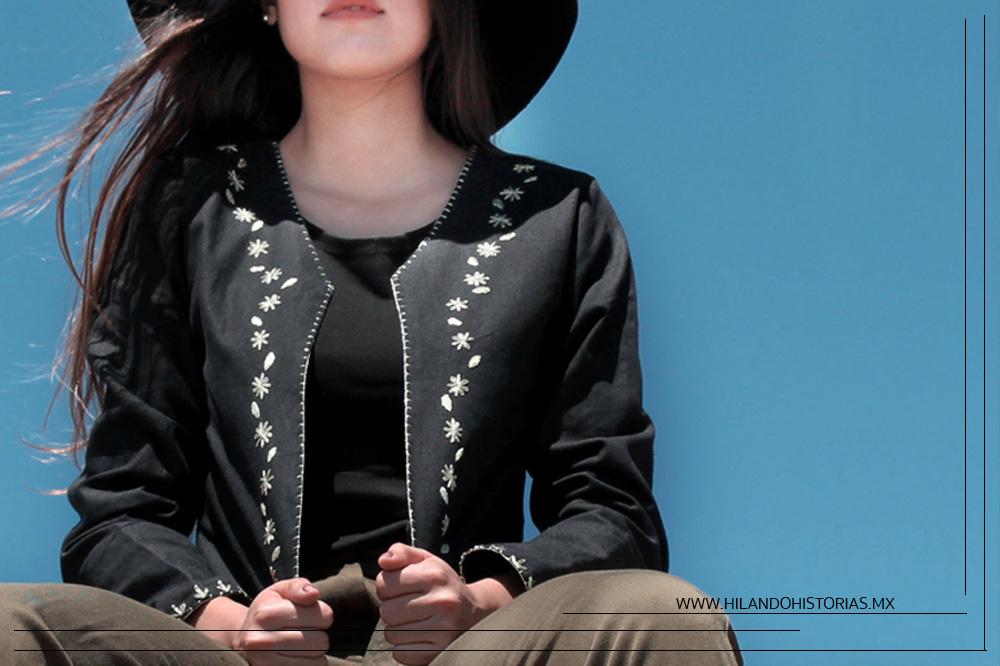


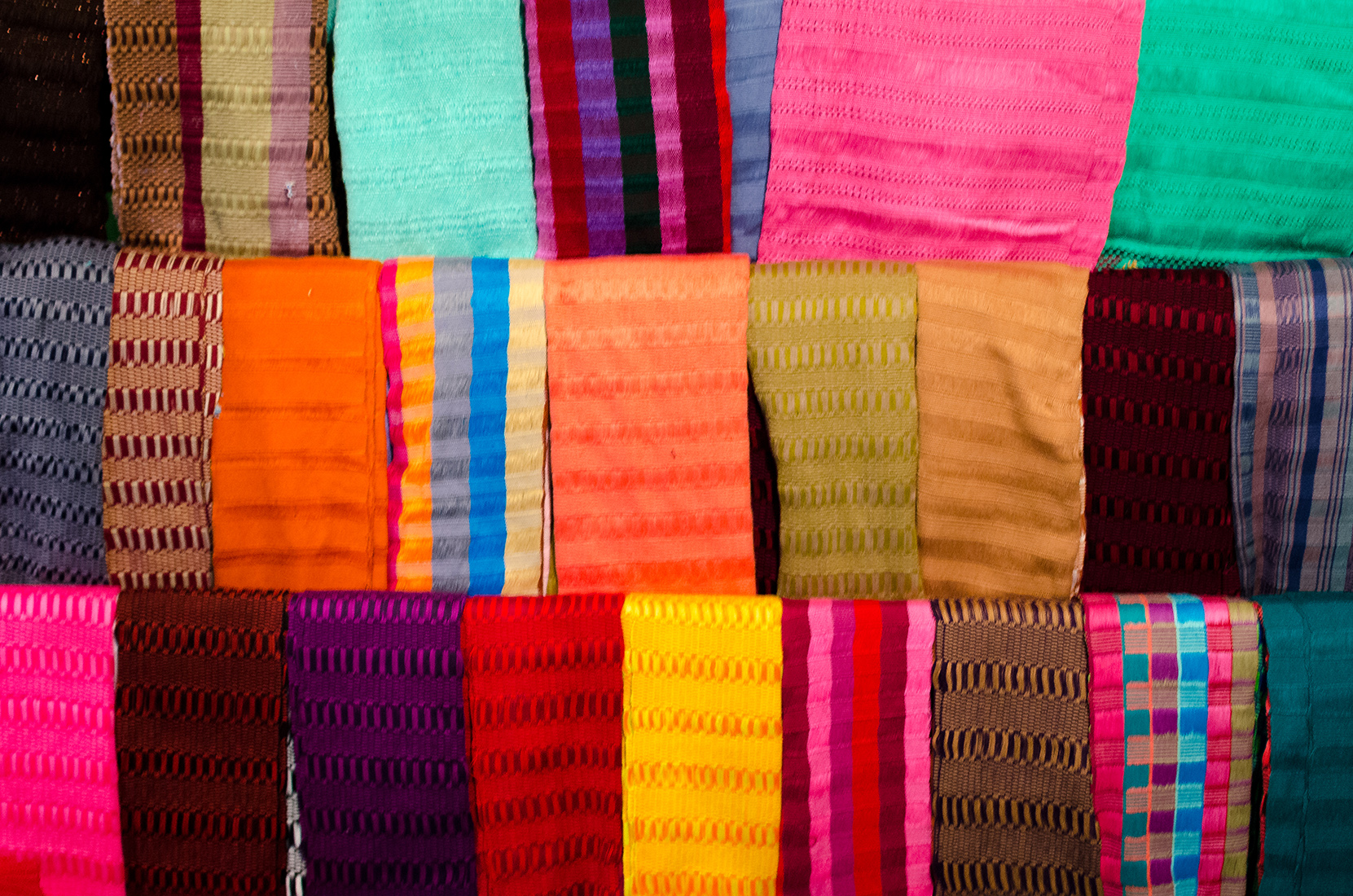
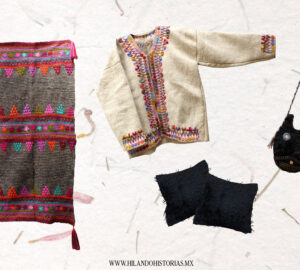
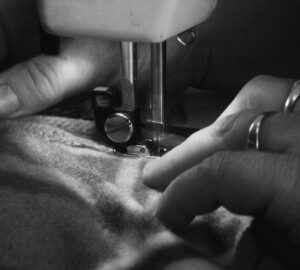

3 comentarios